One cannot travel to India and not come away with a profound sense of the sweep of history. In Delhi, we visited some of the country's most significant historical monuments. The massive"Red Fort," so named because of its walls of bright red sandstone, was begun in 1638 and was completed 10 years later. Construction was initiated by Mughal Shah Jahan, architect of the Taj Mahal, who intended to move his capital from Agra to Dehli. Before completing the complex, however, he was deposed and imprisioned by his son Aurangzeb.
The history of India has been the history of a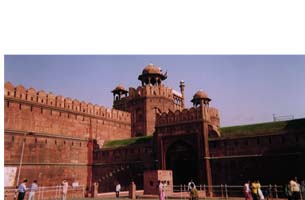
struggle between the mechanical spirit of cadence
and conformity to social organization,
and the creative spirit of man, which seeks
freedom and love in self-expression.
We must watch and see if the latter is still alive
in India, and if the former can offer service and
hospitality to man.
--Rabindranath Tagore
 The Taj Mahal represents the highlight of Mughal tomb architecture.
It was built by emperor Shah Jahan in memory of his second wife, Mumtaz
Mahal, who died while giving birth in 1631. Construction started in 1631
and was completed in 1653. The mausoleum itself stands on a raised marble
platform on the northern edge of beautiful gardens. This impressive tomb
is beautiful from any angle from which it may be observed, however, the
close up details make it truly astounding. It is built in marble into which
semiprecious stones were inlaid in a rich and exquisite set of ornamental
patterns. In addition to the marvelous architectural and decorative work
of the structure, our senses were saturated with the rich, colorful, and
diverse set of textiles wore by the thousands of visitors and pilgrams at
any given time.
The Taj Mahal represents the highlight of Mughal tomb architecture.
It was built by emperor Shah Jahan in memory of his second wife, Mumtaz
Mahal, who died while giving birth in 1631. Construction started in 1631
and was completed in 1653. The mausoleum itself stands on a raised marble
platform on the northern edge of beautiful gardens. This impressive tomb
is beautiful from any angle from which it may be observed, however, the
close up details make it truly astounding. It is built in marble into which
semiprecious stones were inlaid in a rich and exquisite set of ornamental
patterns. In addition to the marvelous architectural and decorative work
of the structure, our senses were saturated with the rich, colorful, and
diverse set of textiles wore by the thousands of visitors and pilgrams at
any given time.
We did enjoy the Taj Mahal, but we also enjoyed the cultural experience of riding to it in camel carts. Some of us discovered that it might be dangerous to sit too close to a camel when it decides to wave its tail around!.
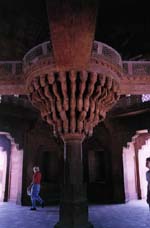
We also visited the fortified ghost city of Fatehpur Sikri, the capital of the Mughal Empire between 1571 and 1585, under emperor Akbar the Great. Here, on the right, we see the central and elevated area where the emperor used to sit to address his court.
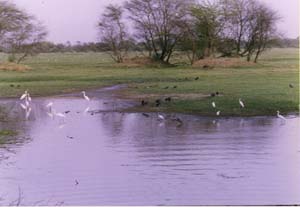
Some of us visited Bharatpur Bird Sanctuary. This bird sanctuary, part of the the Keoladeo Ghana National Park, has been listed as a World Heritage site. This sanctuary is home to more thatn 415 species of birds, 117 of which migrate from as far away as Siberia and China.
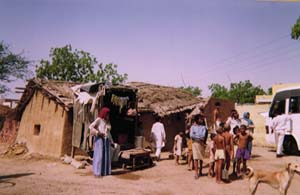
During the three-week trip we traveled primarily by
minibus, which provided us the opportunity of seeing
the countryside "up close."
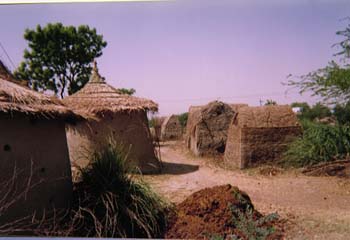
The structures on the right with pointed roof-
tops are rural dwelling places. The buildings
on the left are constructed of cow dung.
These preserve and house the dung, which is
used both as crop fertilizer and heating fuel.